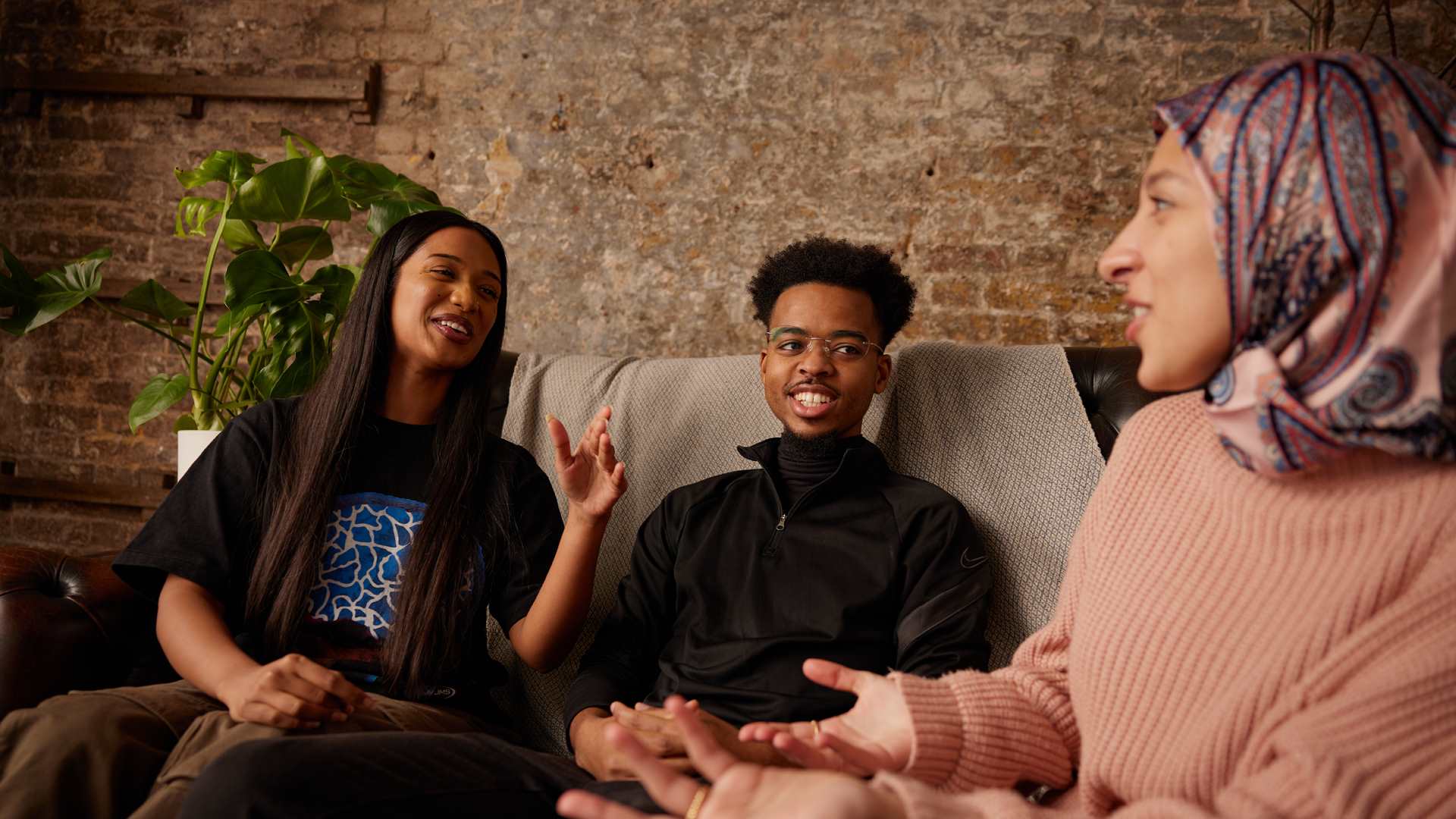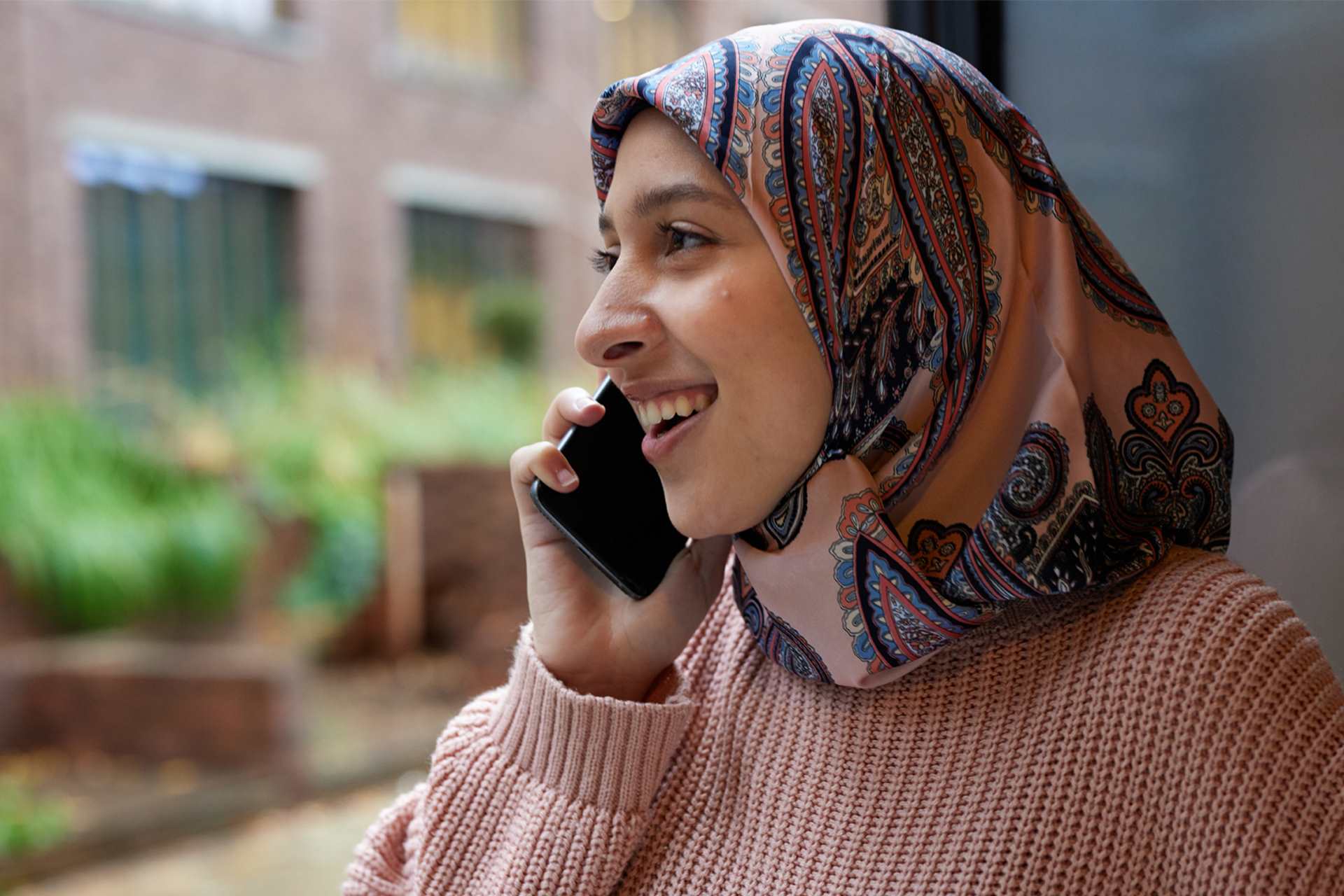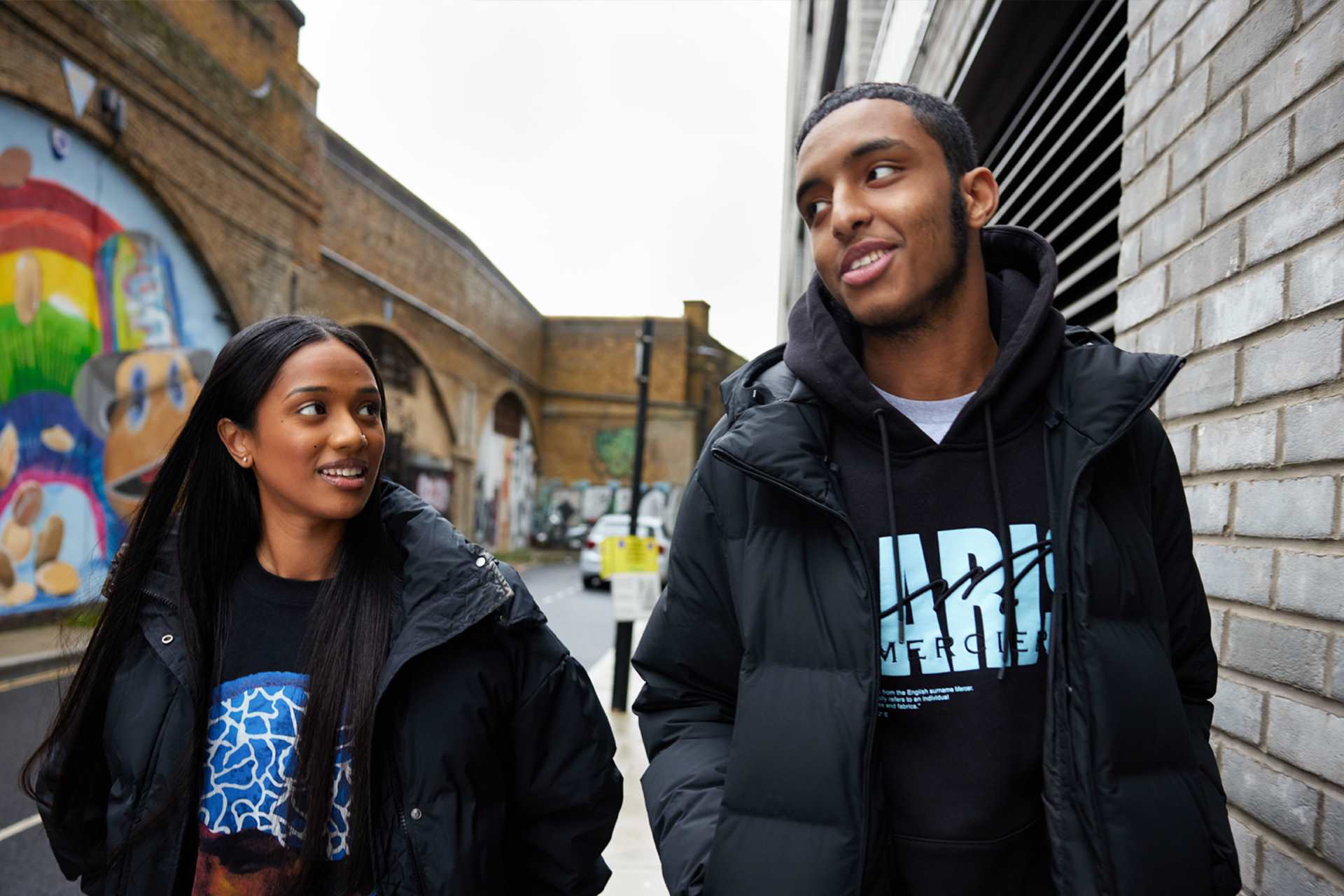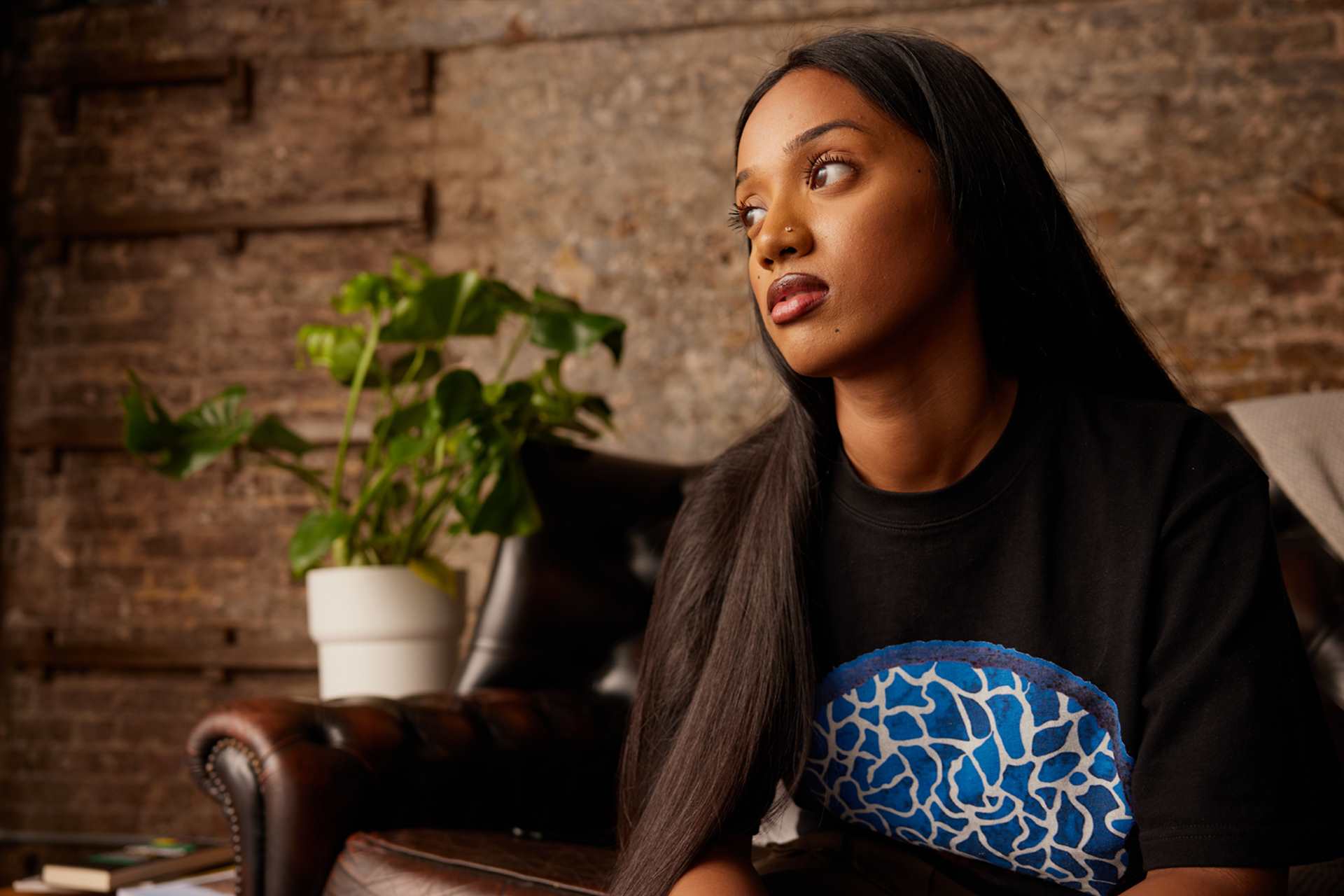In 2022, we teamed up with Muslim Youth Helpline to run insight sessions with young Muslims. They told us about the cultural values and beliefs that shape how they see the world and their mental health. For many, faith and a connection with Allah are a big source of strength. But we also heard about some of the barriers that can make it harder to reach out for support.
Young Muslims told us they want to see more:
- stories from young Muslims they can relate to
- content that’s honest, real and backed up with practical advice
- content that celebrates the personal and unique relationship young Muslims have with their faith, while still highlighting the highs and the lows
Everything on this page has been created by young Muslim people and content creators. It’s real and it’s personal, exploring themes like identity, self-acceptance, grief, and pressure.
Whether you’re Muslim or not, we hope this page gives you a sense of comfort and shows that your identity, in all its parts, deserves to be seen and celebrated.
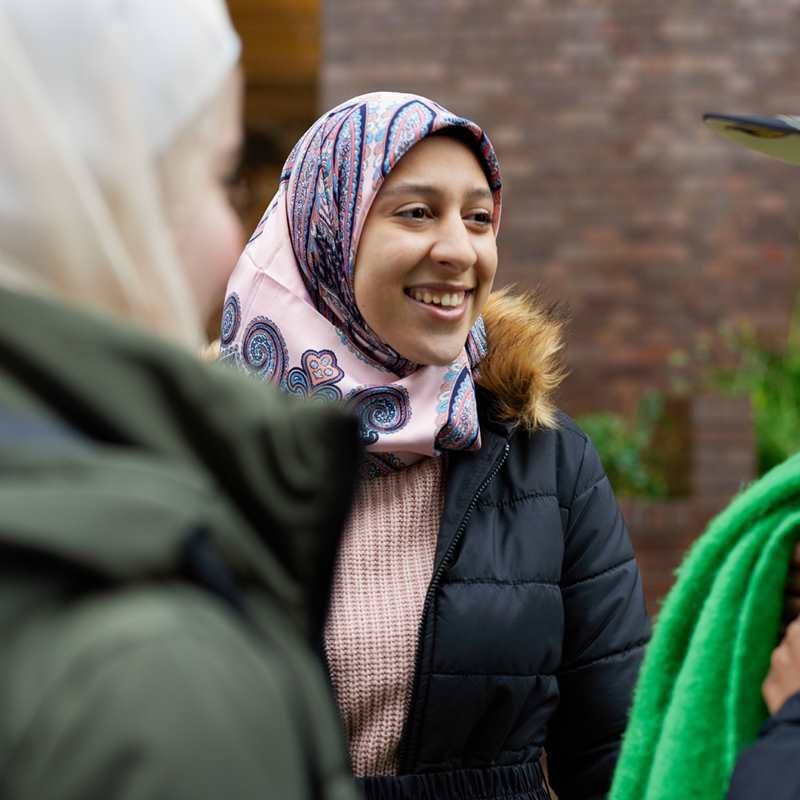
Maryam's story
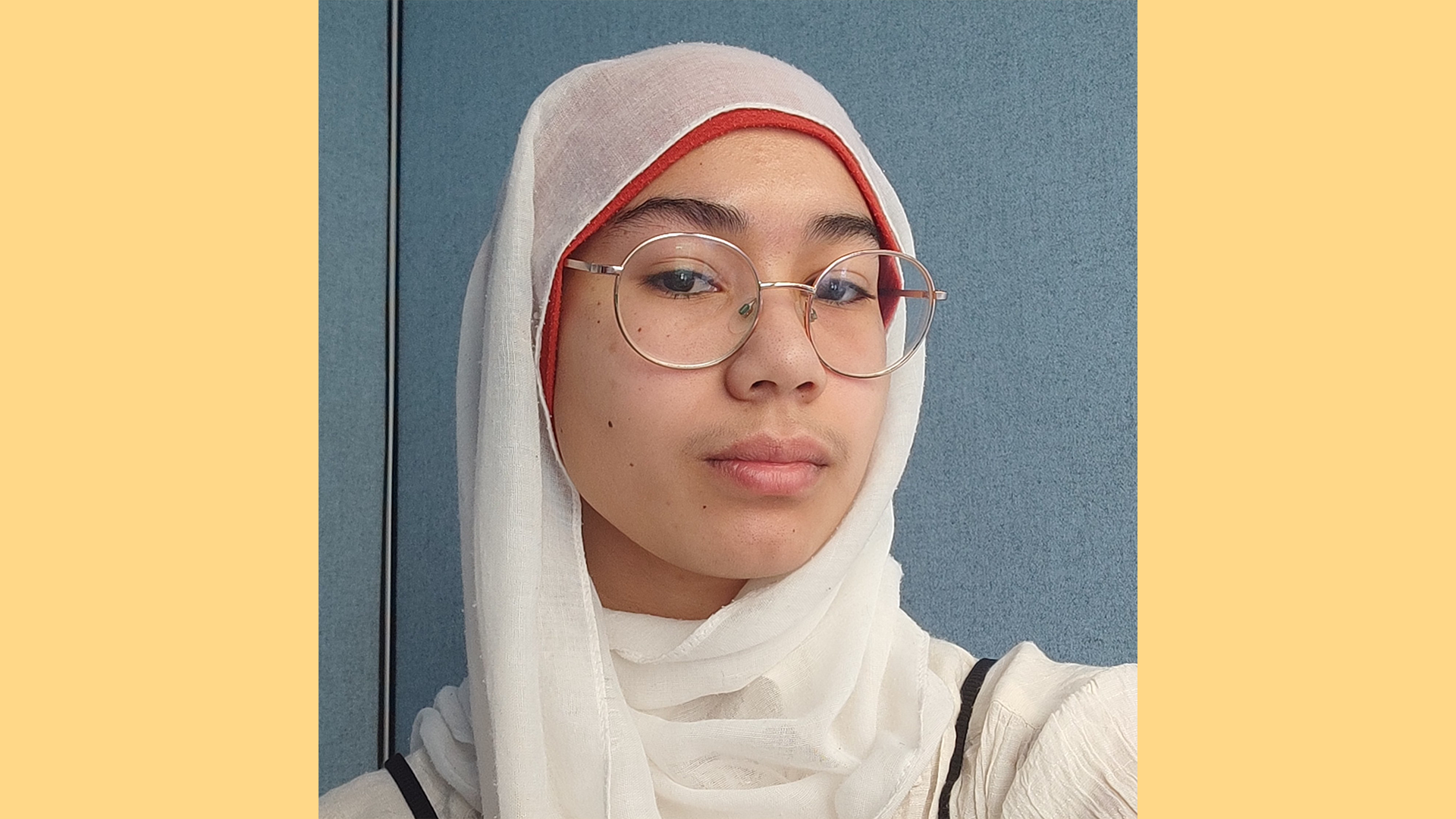
Time passes in a blink of an eye
Zines have been a key part of my life since 2023, when I first started using the art form as a rudimentary, self-guided method of art therapy. As a perfectionist, I had always been obsessed with creating ‘good’ art, but zines helped to deconstruct this idea that art has to look aesthetically pleasing to have any value. Zines also helped me to combine different types of art that I loved - sketching, painting, creative writing and poetry, to name a few.
This particular zine is split into two parts. The first part - “In the Blink of an Eye” - explores a large portion of my mental health experience. For almost more than a decade, I experienced serious struggles with mental health. For a long period of time, this came to define me. I found it difficult to identify my personality, as it was lost in a slog of feelings that came at me too much, or not at all. Every day was a battle to get up, keep going and live a ‘normal’ life. It was an oppressing time, where even the little moments of joy were immediately sucked up into a black hole of “nothing even matters”.
The second part of the zine “Time Passes”, focuses on the improvement of my mental health and how some changes to my life made the biggest impact. Everyone knows the saying “time heals all wounds”. I don’t necessarily agree. What I do believe is that the passing of time can ease some burdens. Time passed, and circumstances changed (and it’s not always easy!) and it is thanks to a combination of both - as well as striving to hope and pray for better things - that I was able to overcome the worst.
Throughout the zine, you observe a butterfly fluttering through the pages - a red butterfly in the first part, which transforms into a blue butterfly by the second part. The butterfly here represents faith. In particular, my relationship with faith. At first, this is strained - the fiery red wings show conflict, my feelings of hopelessness and desperation of wanting to believe but succumbing to fear that nothing would change. By the second part of the zine, the worst of times have calmed, and I can rekindle my faith in not just Allah, but also myself. Blue is the colour of calm, the colour of clear skies. Faith can be an anchor, keeping me grounded in these moments of calm.
My faith is still something I struggle with, but one thing I have come to accept is that there is so much love in the universe. And Allah will always hold that love for me.
[First/Title page]: In a blink of an eye
Image description: A black and white illustration featuring a classical-style portrait of a woman against a white background. A simple drawing of an eye is layered over the top half of the face, and the words ‘In a blink of an eye’ are handwritten in a white rectangle below.
[Second page]: 12 years ago, my world ended for the first time.
Image description: A collage of three illustrations are layered over each other over a white background, featuring imagery of a skull, a dinosaur head and a skeleton with two human figures. There is a red butterfly figure on the corner of the page, and on the top left there is handwriting that reads ’12 years ago, my world ended for the first time.’
[Third page]: I fell into an ocean and I did not know how to swim.
Image description: An illustration of waves taking half of the page, over a white background. In black ink, there is a simple drawing of a hand reaching out of the waves, with the word ‘help!’ above it. There is a red butterfly figure at the top of the page on the left. On the bottom half of the page, there is handwriting that reads ‘I fell into an ocean and I did not know how to swim.’
[Fourth page]: The water pulled me under - daily, I drowned.
Image description: Two image panels side by side featuring illustrations of two figures struggling in rough ocean waves. Above them there is a small cut-out collage of a stormy sea with a sinking boat and people overboard. There is a right butterfly figure above these panels on the left, and handwriting at the top of the page reads ‘The water pulled me under – daily, I drowned.’
[Fifth page]: 8 years passed, and the ocean had not changed.
Image description: In the middle of a white page, there is a circular-shaped illustration of a storm over the sea at night. Around it, there is handwriting that says ‘8 years passed, and the ocean had not changed.’ There is a red butterfly figured at the top right of the page.
[Sixth and Seventh page]: Another year / | Another drowning.
Image description: An illustration of a man who seems to be struggling to hold on in big sea waves pasted across pages six and seven. Handwriting in the top left corner reads ‘Another year/’. There is a red butterfly figure at the bottom of the page on the left, against the white background. Handwriting in the bottom right corner reads ‘Another drowning’.
[Eighth page]: But I chose to learn how to swim
Image description: An illustration of a duck swimming in a blue pond or lake against a white background. There is a red butterfly figure over the illustration, beside the duck.
[Ninth page]: Time passes
Image description: An illustration of a traditional clock. Handwriting in a box below the clock face reads ‘Time passes’, against a white background.
[Tenth page]: I did CBT. (it didn’t help as much as I'd hoped) I prayed and prayed and prayed – (or at least I tried)
Image description: Mixed-media collage featuring two main sections over a white background. At the top, a speech bubble on a patterned brown-coloured background reads ‘I did CBT. (It didn’t help as much as I’d hoped)’. Below, a vintage-style illustration shows a seated man speaking to a woman in a chair. Over it, handwritten text reads ‘I prayed and prayed and prayed (or at least I tried)’ with the phrase ‘Clinging onto faith’ written vertically along the side of another green-coloured background in vertical rectangle shape. There is a blue butterfly figure on the left.
[Eleventh page]: I took some meds. (then stopped) (then started again) Clinging onto faith
Image description: Mixed-media collage over a white background featuring a simple line drawing of a hand holding a small bottle of medication, a landscape rectangle featuring a red flower pattern, and a coloured illustration of a flower with leaves. There is a small grey circle beside the hand, and navy lines going down the right side of the page. Handwriting across the page reads ‘I took some meds. (then stopped) (then started again)’. ‘Clinging onto faith’ is written vertically down the left side of the page.
[Twelfth and Thirteenth page]: I got a new job! This saved my life | I felt Allah’s love hold me tight. I chose to live!!
Image description: Mixed-media collage spread across pages twelve and thirteen, against a white background. The main image is an illustration of twisting green vines, and there are cut-outs of classical-style figures and flowers pasted over it. Handwriting in four white speech bubbles reads ‘I got a new job’, ‘This saved my life!’, ‘I felt Allah’s love hold me tight’, ‘I chose to live!!’. There is a blue butterfly figure on the right page.
[Fourteenth and Fifteenth page]: I recognised & took care of my needs. Noise-cancelling headphones, my beloved | I remembered He is the most compassionate + the most merciful. Everything got a little LOT lighter.
Image description: A brightly coloured collage filled with floral patterns, vintage-style illustrations, and hand-written text across pages fourteen and fifteen. Over an illustration of a vintage-style portrait, there are bold black headphones drawn over a woman’s ears. There is a blue butterfly figure on the right page towards the bottom. Handwriting directly over the white background in different places reads ‘I recognised & took care of my needs.’, ‘noise-cancelling headphones, my beloved’, ‘I remembered He is the most compassionate + the most merciful’, ‘Everything got a little lot lighter.’ There is Arabic scripture above ‘the most compassionate’ and ‘the most merciful’.
[Sixteenth page]: And no matter what the future brings, I'm proud of who I am and who I have been.
Image description: A collage of five flower illustrations and paintings against a white background. There is a blue butterfly figure at the top of the page. Handwriting in a small white box in the middle of the page reads ‘And no matter what the future brings, I’m proud of who I am and who I have been.’
My advice to someone similarly struggling would be to seek out your own truth. Religion is a guidebook, but it may not necessarily have all the answers you seek. You must also search for truth yourself - whether this is truth in the sense of faith, how you practice faith, or even a personal philosophy you hold onto that gets you through the day. Everyone’s relationship with faith is individual and deeply personal. When experiencing mental health crises, this relationship (like any relationship with others) can become strained. And that’s perfectly natural. If praying helps you, then continue to do so. If it worsens your state, explore other methods of caring for your mental health - you can speak to friends; take CBT sessions; explore medicines with your doctor; or consider other lifestyle changes. You are never a bad Muslim for seeking help and support. In fact, Islam has always encouraged Muslims to take care of their health - whether it be physical, mental or spiritual. And always remember that you are loved, by your siblings in faith, but also above all else, by Allah. He is al-Wadud, ar-Raheem and as-Salam - the most loving, the most merciful, the source of peace.
Adja's story
Navigating education as a young Muslim
This video follows a typical day in my life at university, whilst I talk about my experience being Muslim through the education system. I shed light on the external pressures that come with this, but I also share tips on how I manage these pressures, to keep my mental health afloat. My inspiration behind this post was that I personally have never seen a video about a young Muslim in university speaking on the pressures, and how the university experience is inherently different for us, and if I saw a video like this before starting university, or even during university, I would’ve felt less alone, knowing there are others going through this.
Adja is a Black Muslim young woman. She is filming a typical day in the life from her point of view, as a Muslim university student. There are several clips showing key moments of her day, including praying at home, reading the Qur’an, travelling through London, attending lectures and seminars, and praying on campus. The video ends with a blank screen and white text displaying Adja’s final point: “and the end result will 100% be worth it.”
2-minute watch
My advice for anyone watching, whether you are Muslim or not, is to not fall into anything that you don’t want to do just because others are influencing you. Caring more about what other people think rather than caring about yourself is very detrimental and can lead to a decline in mental health. So I advise you to stay true to your values and do whatever makes you happy.
Aisha's story
Moulded a space
Moulded a space is about growing up in a Muslim household, where there was a lot of stigma surrounding talking about mental health and I was made to feel like it was better to keep it inside. This intersected with me growing up and realising I was a lesbian, which enhanced my mental health issues as I navigated how to exist within the intersection of queerness and Islam. This was extremely difficult because I didn’t really feel accepted from any side of the community, but I maintained faith in Islam despite people trying to push me out due to my sexuality.
It is about pushing through the expectations put onto me by other Muslims and practicing Islam in the way I believe and going on the journey of embracing my sexuality and identity regardless of what others say. Mainly, it is about how despite the challenges I’ve faced in my life as a Queer Muslim and neurodivergent person, I have been able to allow myself to be vulnerable and open about my feelings to give myself the best chance of alleviating the barriers in a world that I thought wasn’t built for me. It’s about finally being able to mould a space for myself in this world, with every intersection being embraced.
Aisha is a Muslim young person with red hair. They are performing a spoken word poem to the camera from different locations within a well-lit building and outside amongst greenery. Sometimes they are standing and sometimes they’re sitting down. The scene cuts with each different backdrop.
4-minute watch
If you’re going through this, one thing I would say is that there is so much strength in allowing yourself to be vulnerable. I thought for so long that I should hide it, but it is so brave and so beautiful to open up about your mental health to someone you trust or a professional that will be able to support you. I would also say that it’s really important to try and see if there are local groups of people with similar intersections to you, whether online or in-person. This has helped me navigate my multiple intersections and embrace them because I saw others doing the same. I think it is so hard to feel comfortable to tell others because we feel so much shame or others don’t believe in it, but your feelings are so valid and important to address. Finding your outlet to express this, whether that’s through journalling, poetry, writing, painting, drawing etc., will allow you to get things off your chest and share your emotions and art with others. You’ve got this.
Aini's story
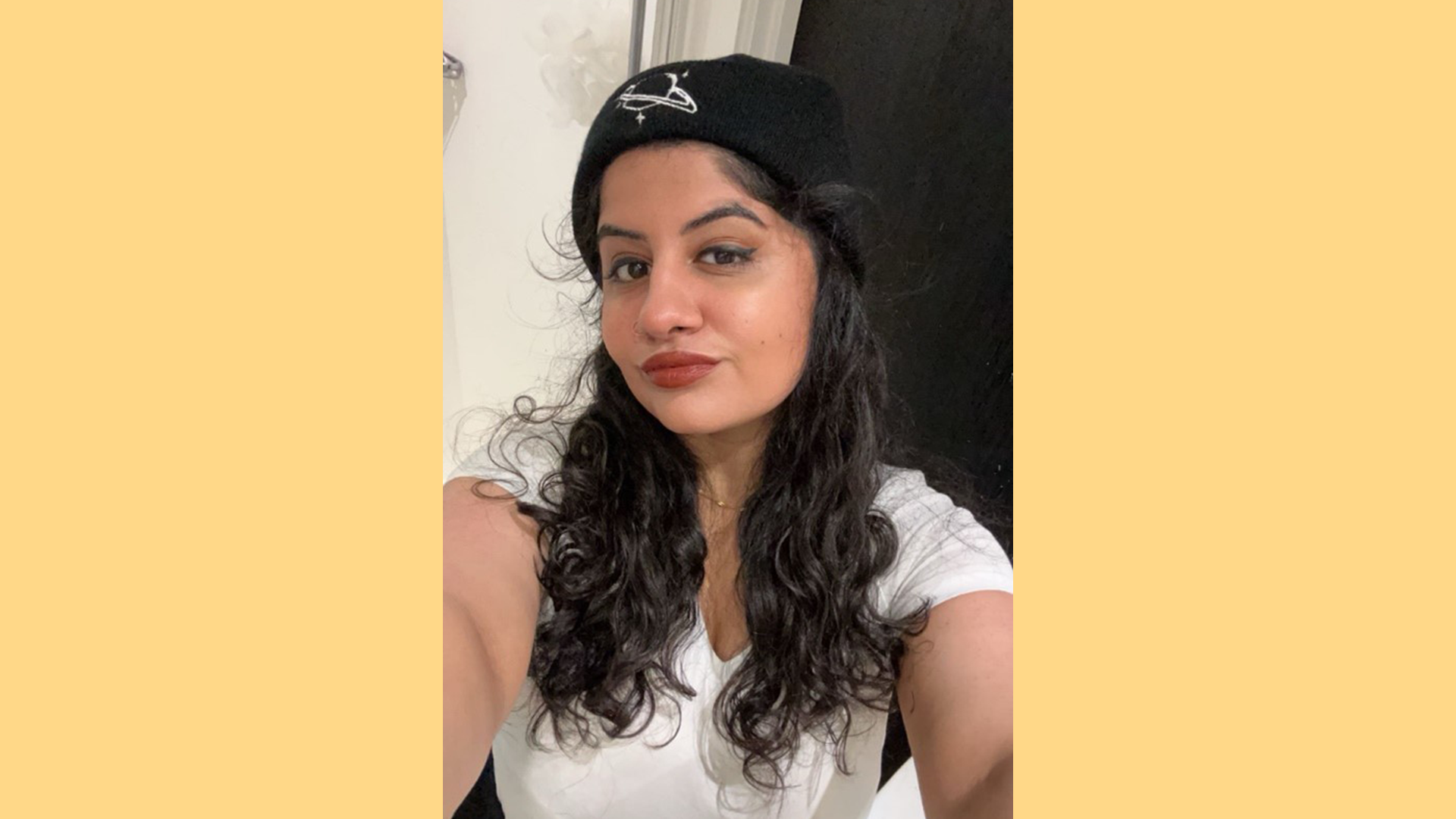
This is me trying
I decided to create This is me trying because I just don’t think alcoholism, addiction and other mental health concerns are talked about within the Muslim community. Growing up in Bradford (a predominantly South Asian and Muslim area), someone with mental health problems was immediately dismissed with having ‘low imaan’ (faith), me included. In the film, Asma’s experience of her being constantly dismissed has led her to turn to substances, an experience a lot of young Muslims have been through. I really hope that this raises a bit more awareness and triggers constructive conversation around this topic, in the hopes that we as a community can start to destigmatise mental illness.
Content warning: This short film was written, directed and filmed by a young creator and is based on their real lived experience. It explores themes of grief and alcoholism. Please be aware that the film includes graphic scenes of alcohol use and vomiting, as well as distressing depictions of isolation and emotional distress. Viewer discretion is strongly advised.
A Muslim young woman with dark straight hair stumbles into a dimly-lit house, looking sad and unsteady on her feet. She glances down at a keyring and runs to the bathroom to be sick. The camera focuses on a keyring, which has a photo on it of two girls wearing headscarves. They’re smiling together. The girl sits on a sofa and picks up and sips from a bottle of alcohol and then watches a clubbing video on her phone. The light from the video reflects off her face. She walks into the kitchen, looking for something to eat. There are pictures of her friend scattered on the worktop and a print-out of Arabic writing on a piece of paper on the cupboard. The young woman drinks water and walks out of the frame.
The girl is then in a new location on a different day, sitting across from an older Muslim woman wearing a headscarf. They are talking to each other. The room is warmly lit and there is a vase with flowers on the table between them. The young woman’s worried expression turns to relief. Both women smile. End credits come on screen with a black background and white writing.
6-minute watch
To anyone who feels seen and heard by the film, I want you to know you are loved and so incredibly valid. Despite what you think, there are lot of people out there who have similar experiences. Curate your internet feed; don’t be afraid to block/hide content that makes you feel ashamed or guilty. Reach out to people and explain how you’re feeling. Don’t be scared to ring your GP for help, that is what they are there for! Things do get better, which I know is a cliché, but with the right tools in place, they absolutely do!
Hamad's story
Mental health, social media & me - A Muslim creator's perspective
In 2023, life happened. I stopped running (something I love to do) for 4 months, which had a huge impact on my mental health. I didn’t realise that impact until it was too late. I was battling suicidal thoughts on my own and a lot of things got on top of me. When it came to social media, I had a few things go wrong. My content was being used to scam people without me knowing a thing – it led to my profile being questioned, people sending horrible messages, and I was being harassed online. Everything mounted up. I realised how drained I was and that I needed to take a step back and focus on my mental health.
After speaking to others, I realised that it’s a common theme within the Muslim community - people struggling to get help, finding the topic hush hush, and avoiding it at all costs. However, with the right time and place, people are willing to talk about it. They come forward and share their stories. Once I was in a better place alhamduliah, I decided to share my story which was so well received and it opened me up to realisation there’s so many others out there who struggle but will suffer in silence.
When this opportunity came, especially speaking from a Muslim creator point of view, I really wanted to share how powerful social media can be. It has its downsides, but I’ve also experienced the best of it. It’s opened up doors for me - I’ve had the opportunity to work with brands, network with amazing people, and get involved in public speaking.
This video features several different clips taken by and of Hamad, a Muslim young man with dark hair. We see shots of him travelling, socialising with peers, running, and taking part in work events where he is doing public speaking on stage. Towards the end of the video, there is a screen recording of Hamad’s Instagram profile and it is scrolling down the page to display thumbnails of a variety of different posts.
1-minute watch
If you’re just starting out on social media, I would recommend limiting who can message you. If you’re getting horrible comments, set the comments to ‘off’ so no one can say anything that might negatively impact you. If you’re struggling - get out there, speak to friends, family you trust. Take a walk, go for a run... A change of environment is always helpful and it can really change your mood.
